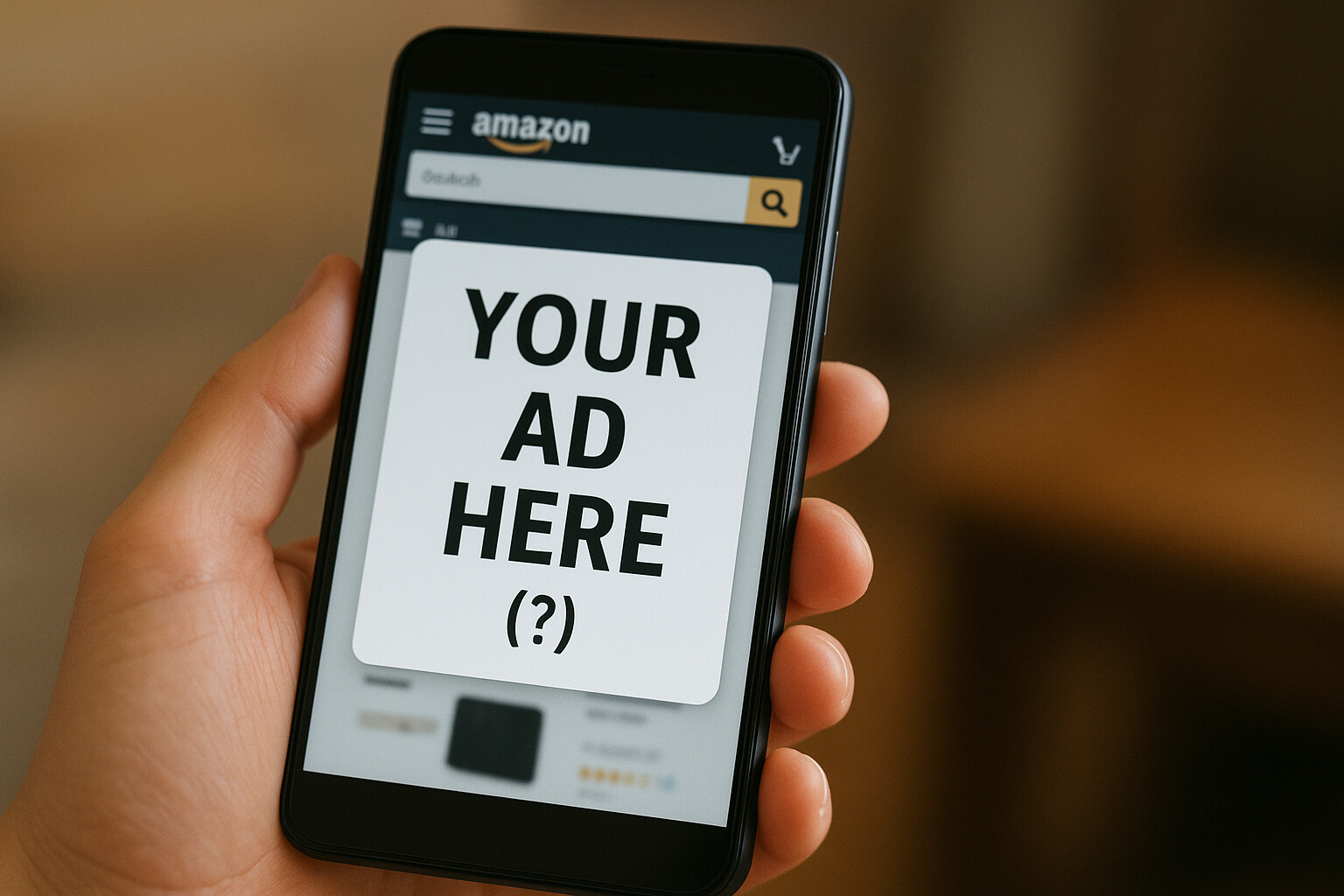How to Create an Amazon Storefront – Step-by-Step

Have you ever heard of Amazon Storefronts?
Sometimes this term is used interchangeably with an Amazon shop or brand store – but that’s actually a bit misleading. Learning how to create an engaging Amazon Storefront can be very helpful for sellers and influencers alike.
Let’s take a look at the benefits.
Instead of building and maintaining your own website (with all the costs and technical upkeep), you get a ready-made showcase hosted right on Amazon. That’s convenient for creators – and psychologically effective for shoppers, who are already in purchase mode the moment they click on an affiliate link.
Not only influencers should think about how to best set up an Amazon Storefront. Sellers and brand owners can benefit, too – either by collaborating with influencers or by setting up their own brand storefront to drive awareness and conversions.
In this guide, we’ll cover:
What Is an Amazon Storefront?
An Amazon Storefront is a customizable landing page that lets you showcase your brand and product lineup in one place – similar to your own branded shop on Amazon. It’s only available to sellers who are enrolled in Amazon Brand Registry and gives you the chance to tell your story, and – once you create your Amazon Storefront – it gives you the chance to highlight product benefits, and guide shoppers through curated collections. You can create subpages for different product categories, add lifestyle imagery, and even embed video. It’s a great way to drive brand loyalty and increase conversions, especially if you’re sending traffic from ads, social media, or influencers to your Amazon presence.
Key Features:
| Influencer Perspective | Seller Perspective |
| Earn While You Recommend: Create a storefront on Amazon so you can share your favorite products and earn a commission every time someone buys through your storefront. | Sales Boost: Creators already have the trust of their followers. Getting your product into their Storefront means you’re speaking to people who are more likely to convert. |
| No Need for a Website: No need to build a personal website – Amazon gives you a clean, professional-looking page, ready to go. | Expanded Reach: A trusted recommendation can carry more weight than a paid ad – especially when it feels authentic and well-matched to the audience. |
| Brand Building: Customize your Storefront to match your visual style and tone, making you easily recognizable for your followers | Stronger Brand Awareness: Your brand stays top of mind if it constantly pops up on influencer content. |
| Easy Product Curation: Group your product picks into helpful lists – gift guides, must-haves, seasonal roundups – so followers can find what they need easily. | Targeted Exposure: Influencers usually serve a specific niche. By collaborating with those who align with your market, your product lands in front of exactly the right audience. |
| Cross-Channel Promotion: Your storefront link works seamlessly across social channels like TikTok, Instagram, YouTube, or blogs. | Low-Risk Investment: Many influencer partnerships are pay-for-performance – just a product sample or a small commission per sale. It’s a low-risk, budget-friendly way to market. |
| Professional Presentation: Set up your Amazon Storefront by using rich visuals, videos, and storytelling to make your recommendations stand out in a polished format. | Flexible Marketing Strategy: Work with multiple creators, test messaging, and scale what performs. |
Why Sellers Should Care About How to Make an Amazon Store Front
Working with Amazon influencers who have popular storefronts can offer you more than significant marketing value. Here are the six biggest advantages:
1. Increased Visibility & Reach
Influencers have loyal, engaged followings. Once you feature your product in their storefront, it reaches an audience that is already warm. On top of this, the promotion often extends across social media channels like Instagram or YouTube.
2. Boosted Credibility & Trust
When an influencer backs your product, it’s like getting a trusted friend to vouch for you. Their audience already trusts them, so that trust naturally rubs off on your brand – this makes the buying decision a lot easier for people.
3. Highly Targeted Exposure
Most influencers have a super specific niche – whether it’s fitness, travel, home decor, etc. If your product fits their world, it gets straight in front of people who are already interested. You’re not casting a wide net, you’re targeting an engaged crowd.
4. Stronger Brand Awareness
If you’re showing up regularly in someone’s Storefront or getting mentioned on their socials, your brand stays fresh in people’s minds. Not just on Amazon, but across the board.
5. Sales Acceleration
You’re basically removing all the barriers – once people see a recommendation from someone they trust, they’re much more likely to end up on your Amazon listing. It shortens the whole path to purchase.
6. Cost-Effective Strategy
Another benefit: You usually only pay once results are visible. Either a small commission or some free product. Compared to running big PPC campaigns, it’s way less risky and often more cost-effective – especially when you’re testing the waters.

Step‑by‑Step: How to Create an Amazon Storefront (Influencer and Seller)
Here’s how to set up a Storefront in just a few steps. These steps apply to both influencers and sellers, although there are differences to consider. We’ve listed these differences for you here:
| Feature | Influencer Storefront | Seller/Brand Storefront |
| Purpose | Product recommendation & affiliate earnings | Brand/product showcase & conversion |
| Requirements | Influencer Program approval | Brand Registry enrollment |
| Platform | Amazon Associates dashboard | Seller Central |
| Content | Any Amazon-listed product | Your own product listings only |
| Revenue | Affiliate commissions | Product sales revenue |
| Promotion | Via social media | Through Amazon search, ads, & SEO |
Step 1: Enroll in the Right Program
Step 2: Choose Your Storefront Layout
Once inside the Storefront builder:
Step 3: Add Pages & Categories
Create dedicated pages for product types, use cases, or seasonal themes:
Step 4: Add Products
You can:
Step 5: Add Visual Content
Set the finer details in your storefront with:
Optimization Tips: How to Create an Amazon Storefront That Stands Out
1. Write with Your Customer in Mind
How to make an Amazon Storefront stand out? Use words your customers actually search for. Think about how they’d describe your product or what problems they’re trying to solve. Add those terms naturally to your page titles and descriptions. And skip the fluff – focus on real-life use cases and the value your product brings.
2. Design for Mobile First
Most Amazon shoppers are browsing on their phones, so your storefront needs to look good on smaller screens. Make an amazing Amazon storefront by using images that are easy to scroll through and make sure your text is large enough to read without zooming.
3. Make Use of A+ Content
If you’ve already created A+ content for your listings, reuse it here to strengthen your storefront. Visuals like comparison tables, benefit callouts, and FAQs can help answer questions and build trust with shoppers.
4. Keep It Fresh
Creating your Amazon Storefront is one thing. Once you have it though, don’t let it go stale. Update your featured products and imagery around major shopping seasons like Black Friday, Prime Day, or back-to-school. A seasonal refresh helps your storefront stay relevant and engaging.
How to Find Amazon Influencers With Storefronts

There’s no one-size-fits-all method – but a combination of these techniques is bound to bring you the results you’re looking for.
1. Amazon Influencer Programs
While there isn’t one comprehensive Amazon influencer program directory, you can discover influencers through other methods: searching for specific products on Amazon, using influencer finder platforms, or exploring social media platforms with relevant hashtags.
2. Social Media Hashtag Research
Search Instagram, YouTube, and TikTok using hashtags relevant to your niche (#amazonfinds, #giftguide, etc.) to uncover influencers showcasing products.
3. Influencer Marketing Platforms
Try using established platforms to find the influencers specified for your needs.
Filter by niche, audience size, and location to find well-aligned creators.
4. Amazon Live
Browse the livestream section on Amazon. Influencers there often double as storefront owners, offering engaging, real-time product promotion.
5. Agencies
Agencies like Mediakix, Socialyte, or Influencer Marketing Hub can create your campaigns, get you in touch with the right people, and assess with whom and how you would achieve your goals quickest.
Final Thoughts

In summary, if you create an Amazon Storefront that is engaging, this can work very well as a growth engine for your business.
Knowing how to create and run an Amazon storefront is a huge benefit for influencers. It’s a powerful, no-fuss alternative to running a personal website: no coding, no maintenance, just affiliate income from content.
For sellers, it opens the door to trusted collaborations, more reach, and higher conversions through social proof.
Whether you’re figuring out how to start your own Amazon Storefront – or partnering with influencers who have one – one thing’s for sure: you can elevate your Amazon presence and unlock new revenue streams. All without reinventing the wheel.
FAQs
Amazon Storefronts are personalized pages that allow Amazon influencers and content creators to present their product recommendations in an engaging, organized format. These storefronts function like a digital showcase where the owners can feature products they have tested and recommended. Followers can shop directly through the storefront, and the influencers receive a commission for these purchases.
Amazon Storefronts can be easily found when influencers or content creators share a link to their storefront on social media. Influencers often link their Amazon Storefronts directly in their profiles or in posts on platforms like Instagram, YouTube, and TikTok. Alternatively, one can use the Amazon app and search for the storefront of a specific influencer.
To create your own Amazon Storefront, you need to join the Amazon Influencer Program. Requirements for this are a social media account with good reach and regular engagement. After signing up and getting approved, you can personalize your storefront and add product recommendations.
Amazon does not require a specific minimum number of followers for the Amazon Influencer or Affiliate Program. Instead, the focus is on the engagement and authenticity of the profile. More followers can help increase reach and sales success, but even micro-influencers with an engaged community can successfully participate in the program.
In the Amazon Influencer and Affiliate Program, content creators earn money by receiving commissions for qualified purchases made through their referral links or storefront. Influencers create engaging content, share their recommendations, and then receive a small percentage of each sale.
Earnings vary depending on the product category and sales numbers. The commission rate typically ranges from 1% to 10% per sold product. How much an influencer earns depends on how often the links are clicked and products are purchased. High-priced items and a high conversion rate lead to higher earnings.
Image credits in the order of the images: © Stanisic Vladimir – stock.adobe.com / © Gorodenkoff – stock.adobe.com / © Amazon / © Krakenimages.com – stock.adobe.com







